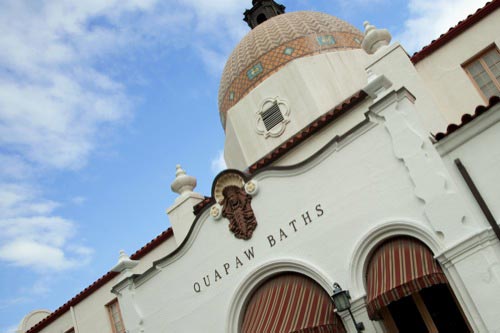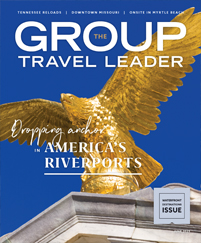
Courtesy Arkansas Dept. of Parks and Tourism
Arkansas
Mystery tours in Arkansas introduce passengers to numerous famous faces, as well as interesting historical sites and arts hot spots throughout the state.
The first day of an Arkansas mystery tour starts in Hope, where groups visit the Clinton Birthplace and Museum. The museum is located in the home where President Bill Clinton’s biological grandparents lived and where Clinton spent his early childhood.
Next is Hot Springs National Park and Bathhouse Row. Located in downtown Hot Springs, the park preserves the numerous historic bathhouses that made the town a popular vacation destination in the early 20th century. Groups can tour the preserved buildings and learn about the thermal springs that run beneath the city streets.
Day two takes visitors to Fort Smith, where they’ll see the town’s former bordello, which now serves as the official welcome center. Groups can tour the house and meet with “Miss Laura,” the madam who ran the house during its heyday.
From there, they proceed to Terra Studios near Fayetteville, where glassworkers create the famous Bluebird of Happiness.
On the third day, the tour continues on to Springdale. There, groups tour the Headquarters House and the 1800s home that served as headquarters for both Union and Confederate forces during a Civil War battle.
The Arkansas mystery tour wraps up in Bentonville. Among the featured attractions is a display of Native American artifacts that focuses on natives who lived in the area during five different periods.
Oklahoma
Mystery tours in Oklahoma major on history and heritage, with a few unexpected surprises thrown in for good measure.
Tours start in Grove, where the HarBer Village comprises more than 100 early-20th-century buildings full of antiques and artifacts. Before leaving Grove, groups stop at Lendonwood Gardens, which showcases more than 1,500 species of plants in a variety of garden settings.
Day two starts in Sallisaw, where Sequoyah’s Cabin marks the place where Cherokee leader Sequoyah developed the tribe’s written language in the late 19th and early 20th centuries. The tour then continues to Broken Arrow and Beavers Bend State Park, where the Forest Heritage Center and Museum has collections dedicated to lumberjacks and other workers in the forest industry.
The third day of the tour includes several small Oklahoma towns such as Hugo, where Mount Olivet Cemetery serves as the final resting place for a number of circus performers. Their headstones are engraved with detailed etchings that depict their circus performances.
Also in Hugo is the Endangered Ark Foundation, which takes care of the country’s second-largest herd of Asian elephants.
The town of Sulphur, which groups visit on the fourth day, is the home of the Chickasaw Cultural Center. Groups can tour a traditional Chickasaw village with council house, summer and winter houses, and a ceremonial mount.
The tour ends in Oklahoma City at the American Banjo Museum, which traces that American instrument from its humble beginnings to stardom in modern folk and bluegrass music.












